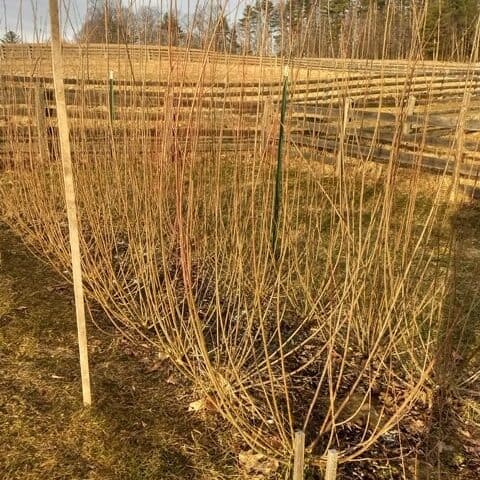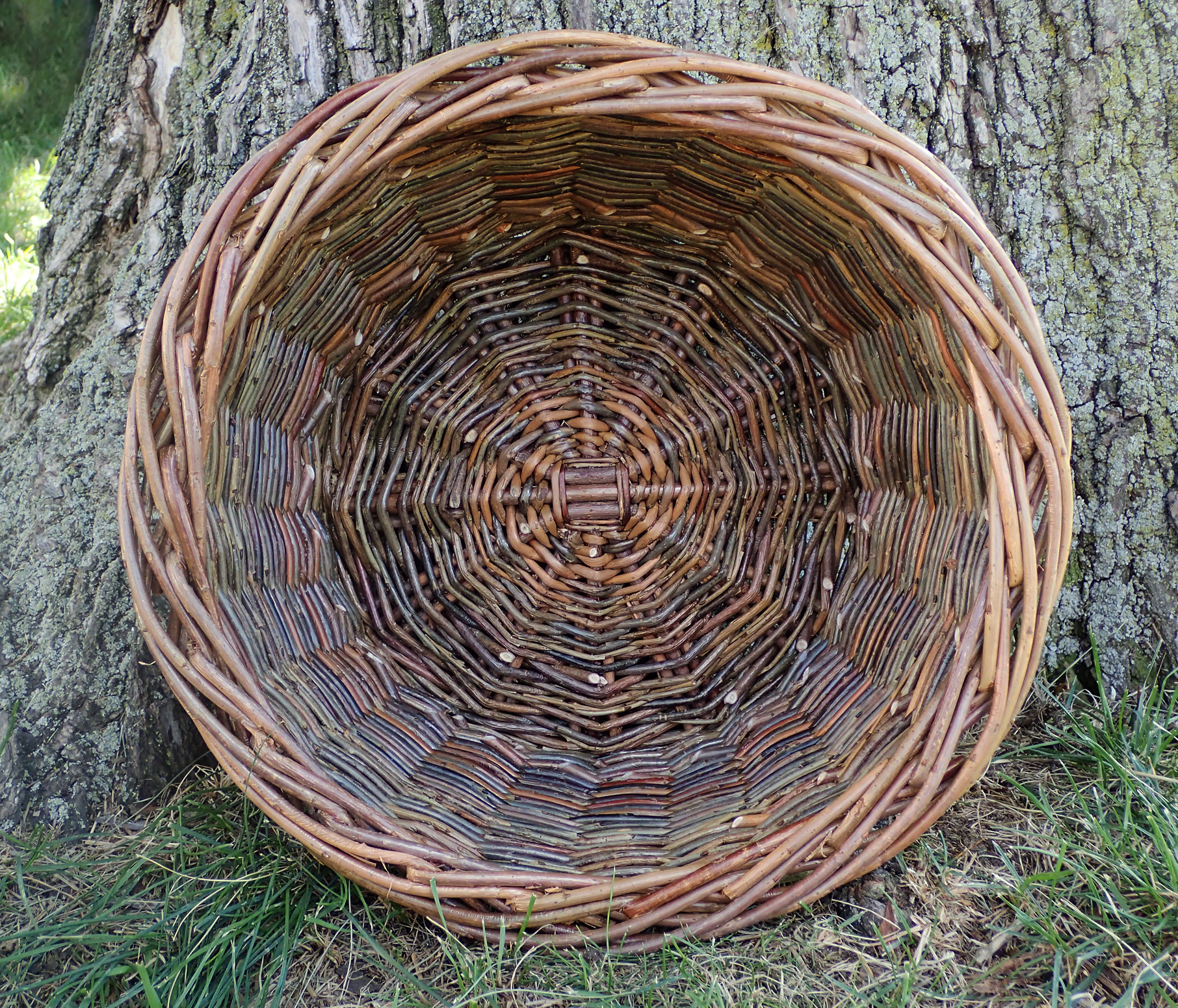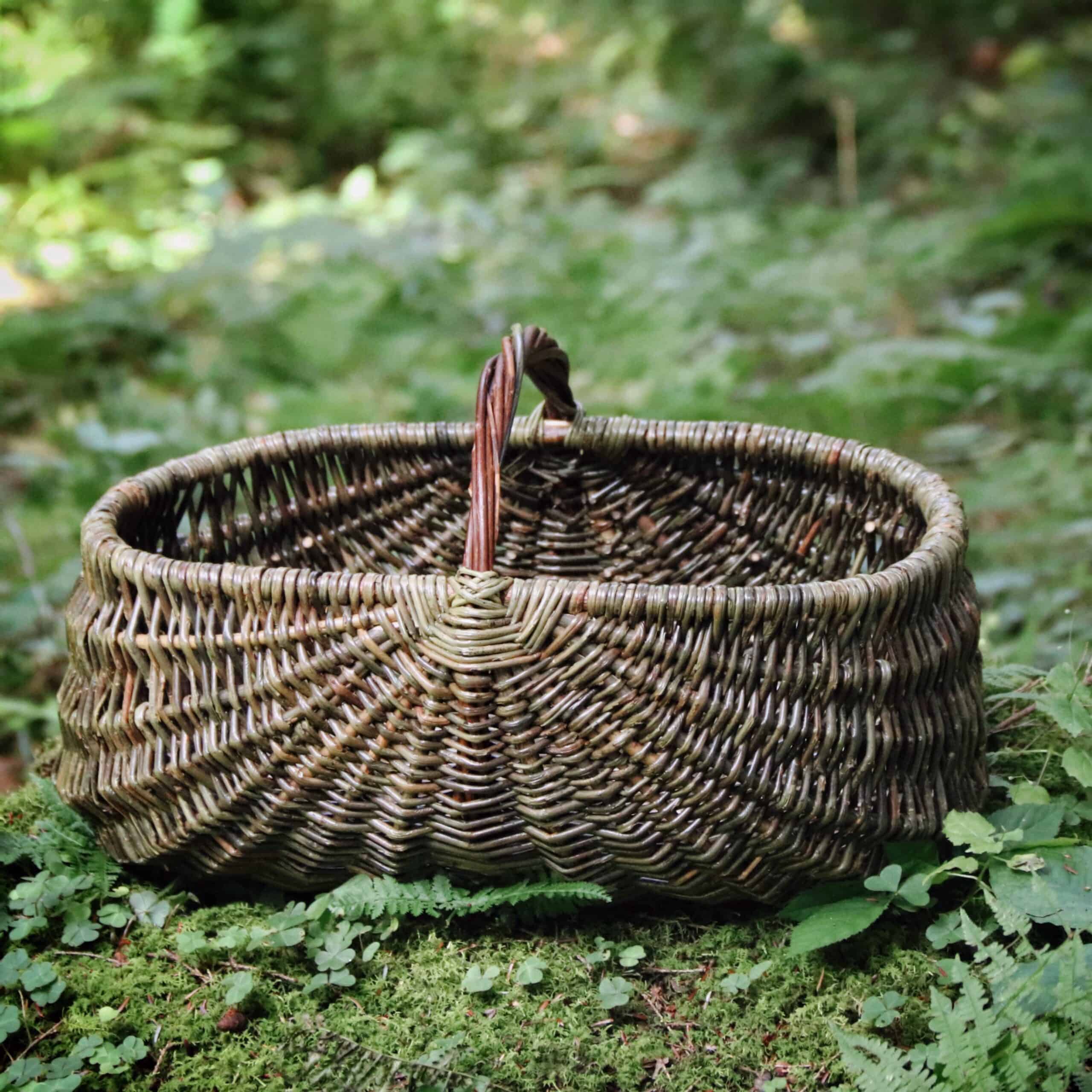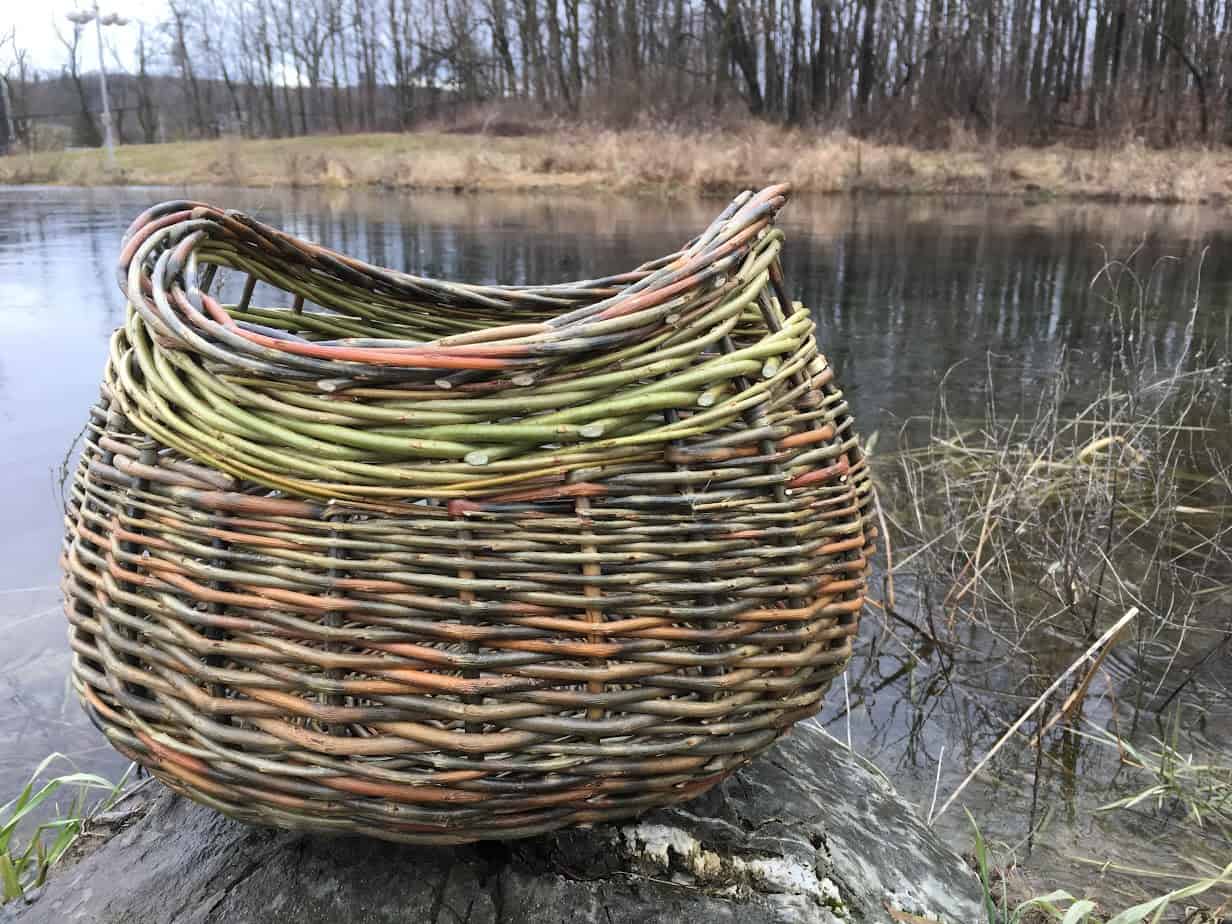The Sally Garden
What is a Sally Garden?
The Sally Garden is a collection of hedgerows where we produce rods for willow basketry. It is sited at the far end of the teaching garden in one of the wettest spots on the farm. The willows, a species who naturally reside on steam banks and other riparian sites, thrive in these conditions and have made the most of a tricky planting site.
Willow are an abundant and culturally significant group of plants composed of over 350 species and just about that many names. Our garden name of Sally, also spelled Salley in parts of Europe, is the Standard English form of an earlier English word ‘sallow’, meaning a species in the genus Salix. Carl Linneaus is credited with formally naming willow with the Latin name Salix but there is evidence to suggest it was already used by the Romans to describe the species for centuries prior. Ultimately, it is thought to have derived from Celtic language, sal meaning ‘near’, and lis meaning ‘water’.

Willow Harvest for Basketry
Willows are coppiced, or cut to one inch above the ground, annually when the plants are dormant. For us this often means February or March, similar to apple pruning time, but it can also be done in early winter. The most important thing is that the willow have shed their leaves prior to harvest.
We preserve some of our willow rods to create cuttings for future plants. Willow is one of the easiest shrubs to propagate and roots readily. After we prepare cuttings they can simply be stuck in the ground and will root at a high success rate. The key is to plant at the appropriate time (around April) when the spring rains will keep the soil saturated through the rooting process.
One of our instructors, Jes Clark of Willowvale Farm, shared their calculation that if each plant produces about 30 stems per year, and it takes 150-300 stems to make one basket, you would need between five and ten willow plants to make a single basket. Good thing they make such a lovely planting en masse!
In 1889, William Butler Yeats wrote ‘Down by the Salley Gardens’ in his first collection of poems. Yeats indicated that his poem was a recreation of three lines recited to him by an women in the Village Ballysadare, County Sligo. It is suggested that the ‘Salley Gardens’ he references are on the banks of the nearby Ballysadare river, where the residents cultivated trees to provide roof thatching materials.
Down by the Salley Gardens
By William Butler Yeats
Down by the salley gardens my love and I did meet;
She passed the salley gardens with little snow-white feet.
She bid me take love easy, as the leaves grow on the tree;
But I, being young and foolish, with her would not agree.
In a field by the river my love and I did stand,
And on my leaning shoulder she laid her snow-white hand.
She bid me take life easy, as the grass grows on the weirs;
But I was young and foolish, and now am full of tears.



